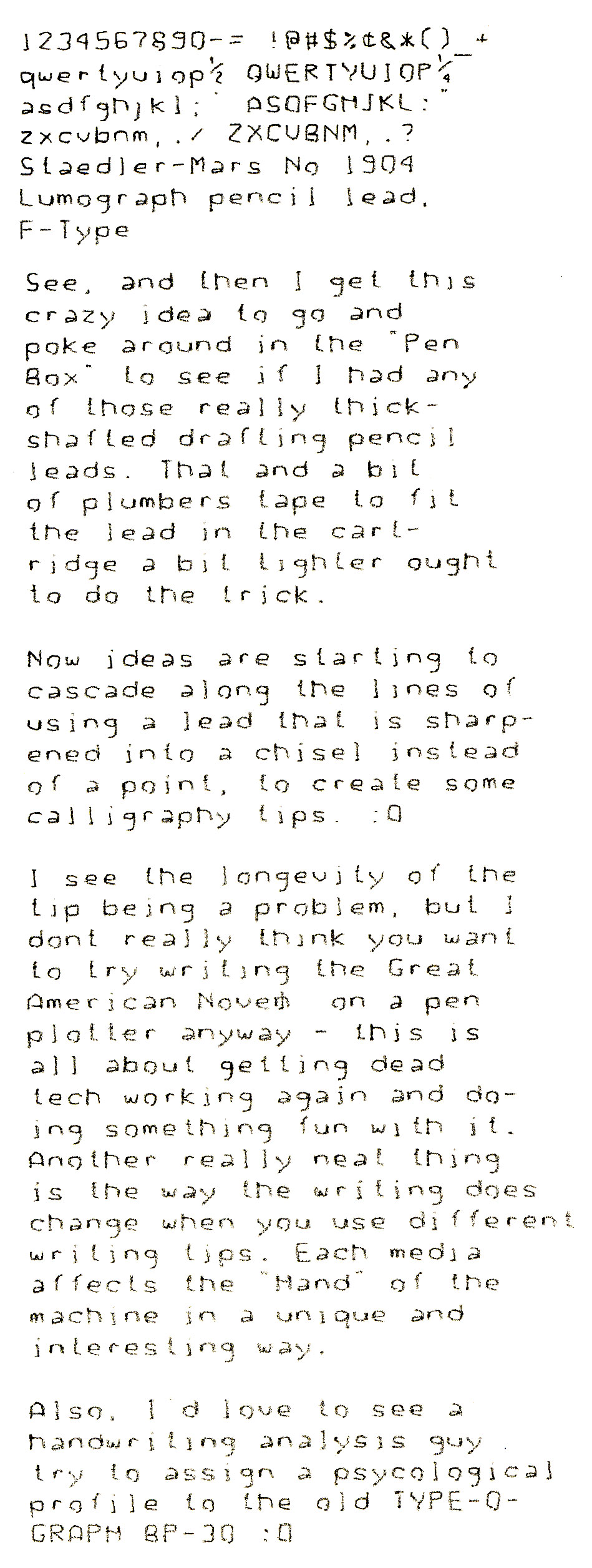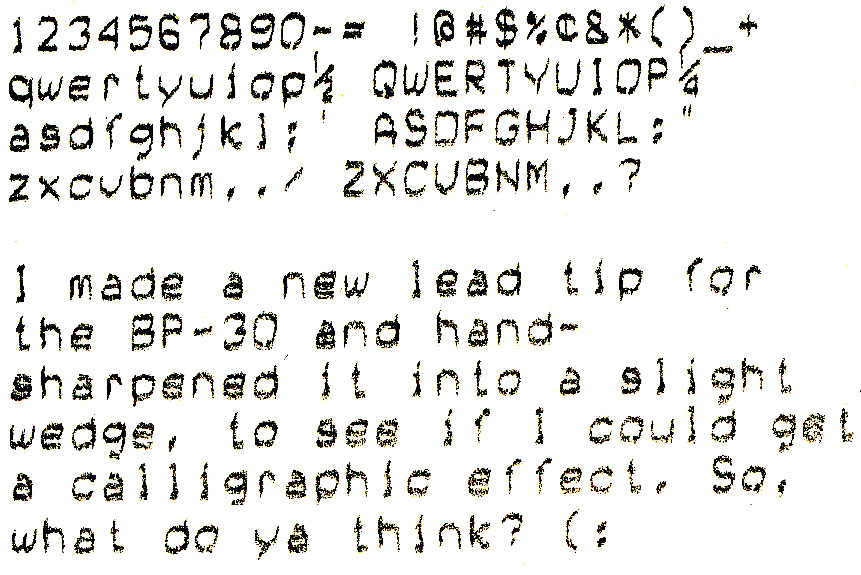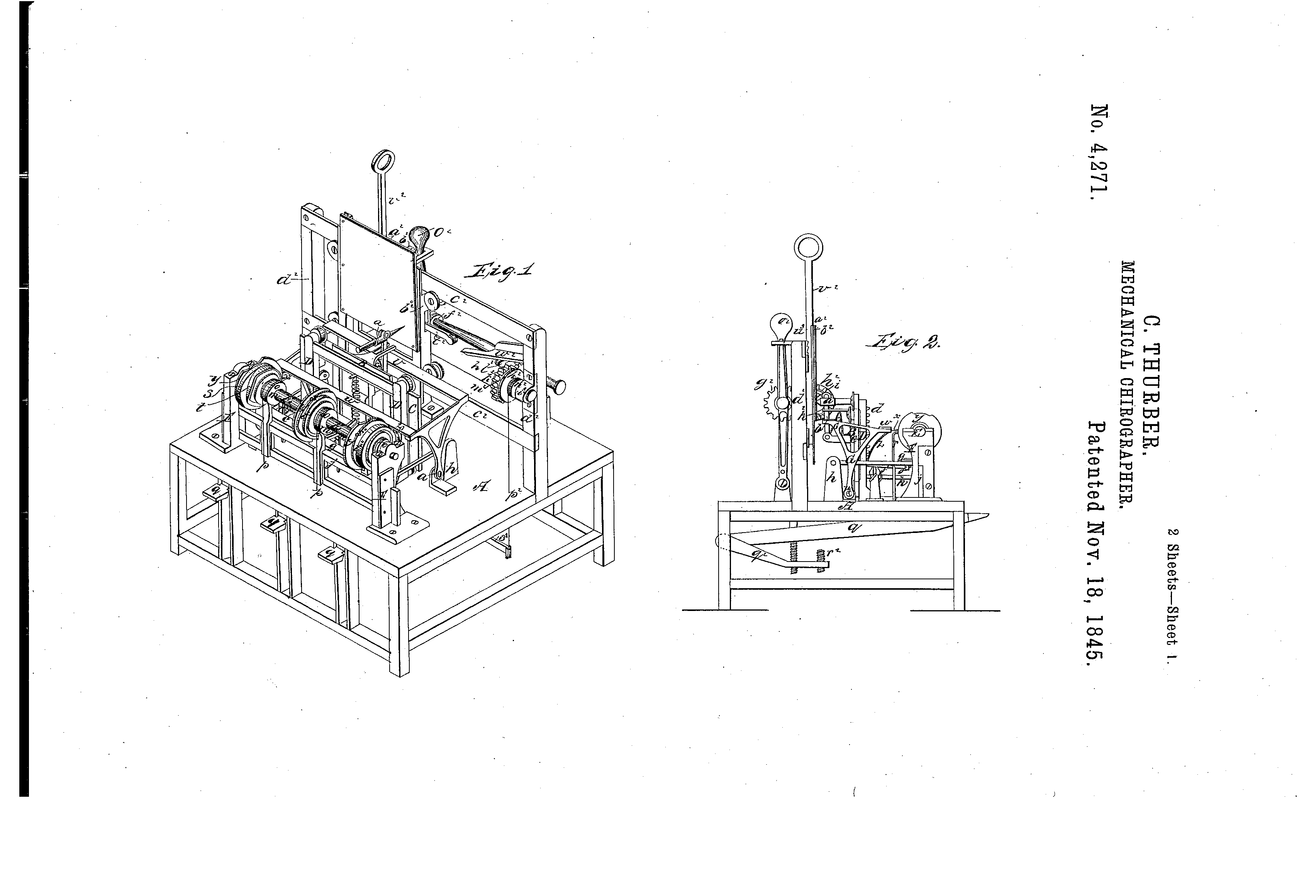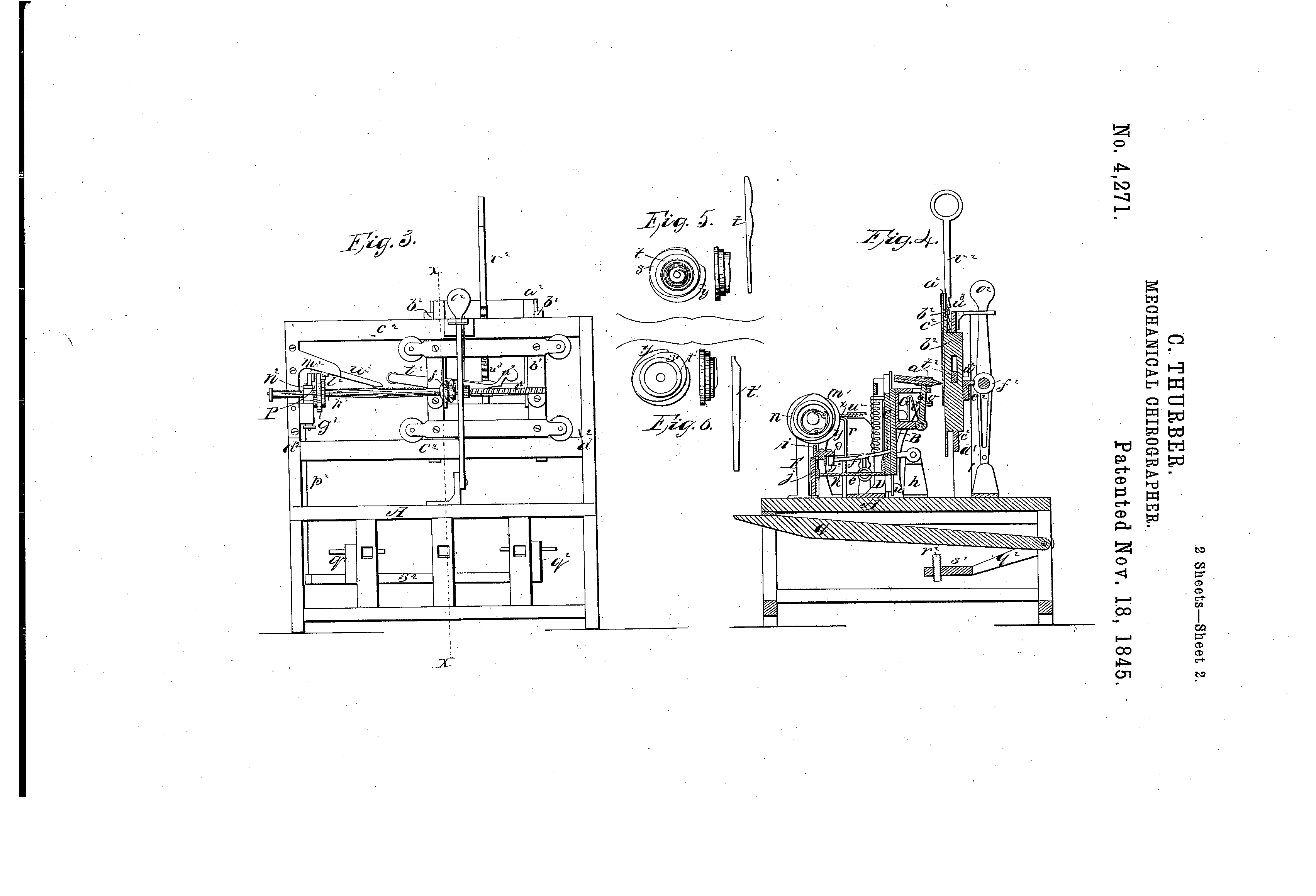
From top: Original ball tip, Lumograph lead (hand-sharpened to wedge), lumograph lead (factory sharp point), felt-tip.

The “Pen Box”, where I keep all of the weird pen/pencil odds & ends I find in thrift store pen bags…
Well, I’ll call the “lead test” a success – and with that concept proven, it seems all you’d really need to build new *pencil* tips is a bit of rigid plastic tube of exactly the right diameter (I’ll need to borrow a micrometer and mic out the dimensions of the original pen cartridge) with a hole in the middle big enough to snugly fit the thicker leads used in certain mechanical drafting/drawing pencils. When cut to proper length, you’d be able to make all the pencil tips you wanted for pretty cheap, and no worries about ink leakage or the tips drying out. If your lead tip starts getting dull, just pull the lead a bit more out of the tube to lengthen and then re-sharpen it. a single “F” hardness drafting lead stick could last you months of constant use! (not to mention the flexibility of carving your own tip shape and being able to choose softer, darker lead hardness if you wanted.)
So, plenty of choices for replacement drawing tips to keep the Type-O-Graph alive and “typing” for years to come! (:
Note: I kind of doubt that Brother engineers were thinking all the way back to 1845 when they designed the Type-O-Graph, but Richard Polt correctly notes that the basic concept of how this machine writes goes all the way back to Charles Thurber’s patent for a Mechanical Chirographer – way older than just about any typing mechanism that actually succeeded in the market:





Great hack!
So how quickly does this gadget write? I would enjoy seeing a video of it in action.
For more information on Thurber, see Robert Messenger’s post at http://oztypewriter.blogspot.com/2012/11/on-this-day-in-typewriter-history-true.html. As shown there, some letters written with the Chirographer show that it worked quite well, maybe better than this Type-O-Graph: http://2.bp.blogspot.com/-4MKEVlkcZtM/UKiRaPulWcI/AAAAAAAAbfo/1m5UG5HUBik/s1600/CT+3a+001.jpg
interesting! (:
Its speed depends on which letters you type – for single-stroke letters, it’s no slower than a daisywheel, but with some characters requiring 3 or 4 strokes (# is 4) it’s that much slower because it has to shift the paper via the platen, shift the print head, and lift up and put down the pen to paper for each stroke. The platen is on a stepper motor which handles y-axis movement and the print head moves back and forth for x-axis movement. They step together to make curves.
I will have to do a video – it’s a hoot to watch the thing do its little shuffle dance when you type :D
also, for the record, it prints 10cpi.
Yes, please, video snippet! I like the pencil type. Very cool mechanism that I never heard about before these posts – thanks! ~TH~
Great project, Ted. You’re the electric corner of the Typosphere.
Look for plotter pens, but you may have to shorten them. As I recall, there are some sort of needle points in the platen to make sure the paper does not slip. A friend grabbed the paper in my Brother and pulled it out, and I think some of the s harp points were damaged, although it still appears to work all right.
I wonder how many of these were made. Sure would like to find one over here in Tokyo!